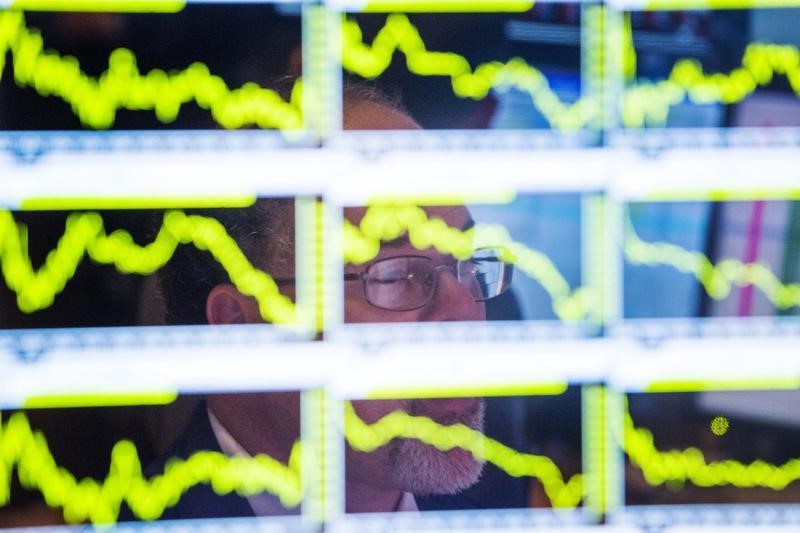© Reuters. FILE PHOTO: A smartphone with a displayed Arm Ltd logo is placed on a computer motherboard in this illustration taken March 6, 2023. REUTERS/Dado Ruvic/Illustration/File Photo
By Sinéad Carew and Lewis Krauskopf
(Reuters) -Shares of Arm Holdings (NASDAQ:) closed down 4.9% on Tuesday, in their third daily decline out of the stock’s first four sessions as a listed company, as investor interest faded in the biggest initial public offering (IPO) for the year so far.
With short sellers looking to profit from the stock, it closed at $55.17 after touching a high of $69 on Friday. The chip designer, in which Softbank (OTC:) holds a roughly 90% stake, closed at $63.59 on Thursday, which was almost 25% higher than its IPO price of $51.
Arm shares underperformed the Philadelphia semiconductor index, which closed down 0.96% on Tuesday as rising bond yields weighed on growth sectors such as technology.
Investors were also monitoring grocery delivery service Instacart, another high-profile IPO, which ended its debut session at $33.70, roughly 12% above its $30 IPO price.
On Tuesday, Redburn Atlantic, an equity research and trading company, launched coverage of ARM with a “neutral” rating and a $50 price target, arguing that recommending ARM at current valuations would require “higher conviction in a multi-year earnings acceleration from a weak (full year 2023) base.”
While bullish investors are pinning their hopes for the stock on demand tied to a surge in interest in artificial intelligence (AI), Daniel Morgan, portfolio manager at Synovus (NYSE:) Trust in Atlanta, said he needed more proof.
“People are sobering up a little bit from the initial excitement,” said Morgan, whose company holds shares in Nvidia (NASDAQ:) but has not invested in Arm.
“My biggest concern is valuation and the fact that everyone is buying ARM because it’s a huge AI play in the eyes of investors. It does benefit from AI but it’s not Nvidia,” said the money manager. “We don’t have any direct evidence at this point that ARM has been directly positively impacted by AI like we have from Nvidia.”
Thomas Martin, senior portfolio manager at GLOBALT Investments, Atlanta, said some initial volatility was to be expected with a new asset on the market.
But when the excitement dies down, he said, “it will go back to the metrics that are associated with its end markets and its end users.”
Data from analytics company Ortex on Tuesday suggested that short sellers had started taking bets against Arm stock, with slightly more than 5 million shares of the newly listed chip designer “on loan,” or 2.7% of the stock’s free float. Short sellers need to borrow a stock to short it, and the relationship between shares on loan and shorted is normally quite close, according to Ortex. Initially with a new stock “there is often a lot of data missing, so there is a reasonable expectation that the real number is higher,” Ortex co-founder Peter Hillerberg said in an email. Arm’s average cost to borrow, which is the interest rate for borrowing, is currently at 12.76%, according to Ortex. By comparison, Tesla (NASDAQ:), a stock with a similar percentage of shorted shares, has a cost to borrow at 0.48%, Ortex said. Arm’s higher cost to borrow “can be an indication that the demand to borrow, and short, the stock is high,” Hillerberg said.
Analysts from Bernstein and Needham in recent days had published less than optimistic notes about the chip technology company and options on the stock starting trading on Monday at a brisk pace, with many investors positioning for further downside.
Late on Monday, Arm announced that its underwriters had exercised their full over-allotment option to buy an additional 7 million American depository shares (ADSs), boosting the total raised from the IPO to approximately $5.2 billion.
Another IPO on the cards is marketing automation company Klaviyo Inc, which is considering pricing its offering at the top of its indicated price range or just above it, according to people familiar with the matter. That IPO is expected to be priced on Thursday evening.
Read the full article here





